Independence-Class Littoral Combat Ship

Conceived as an ship to fight in the Global War on Terror (GWoT), the Independence-class littoral combat ship has been seen as an expensive failure without any clear role in the modern United States Navy. With problems like cracking hulls and an inability to operate on their own, some littoral combat ships (LCS) have been retired before ever hitting the halfway point in their expected lifespans. Yet, more are still being built. Has the U.S. Navy now found a good role for these ships? This is just one of the questions that Peter Suciu explores in this article.
In December, the United States Navy announced that the USS Santa Barbara (LCS-32) completed mine warfare training with unmanned surface vessels. It was seen as an important milestone for the development of the service’s Mine Countermeasures (MCM) mission module that was designed for LCS-32 and her sister ships.
It was only in March 2023 that the USS Cincinnati (LCS-20) completed a series of qualification tests with the MCM, allowing the program to reach Initial Operational Capability. That paved the way for the module to be installed on the USS Canberra (LCS-30) in April 2024. LCS-32 is now the latest ship of her class outfitted with the module — after LCS-30 and USS Tulsa (LCS-16).
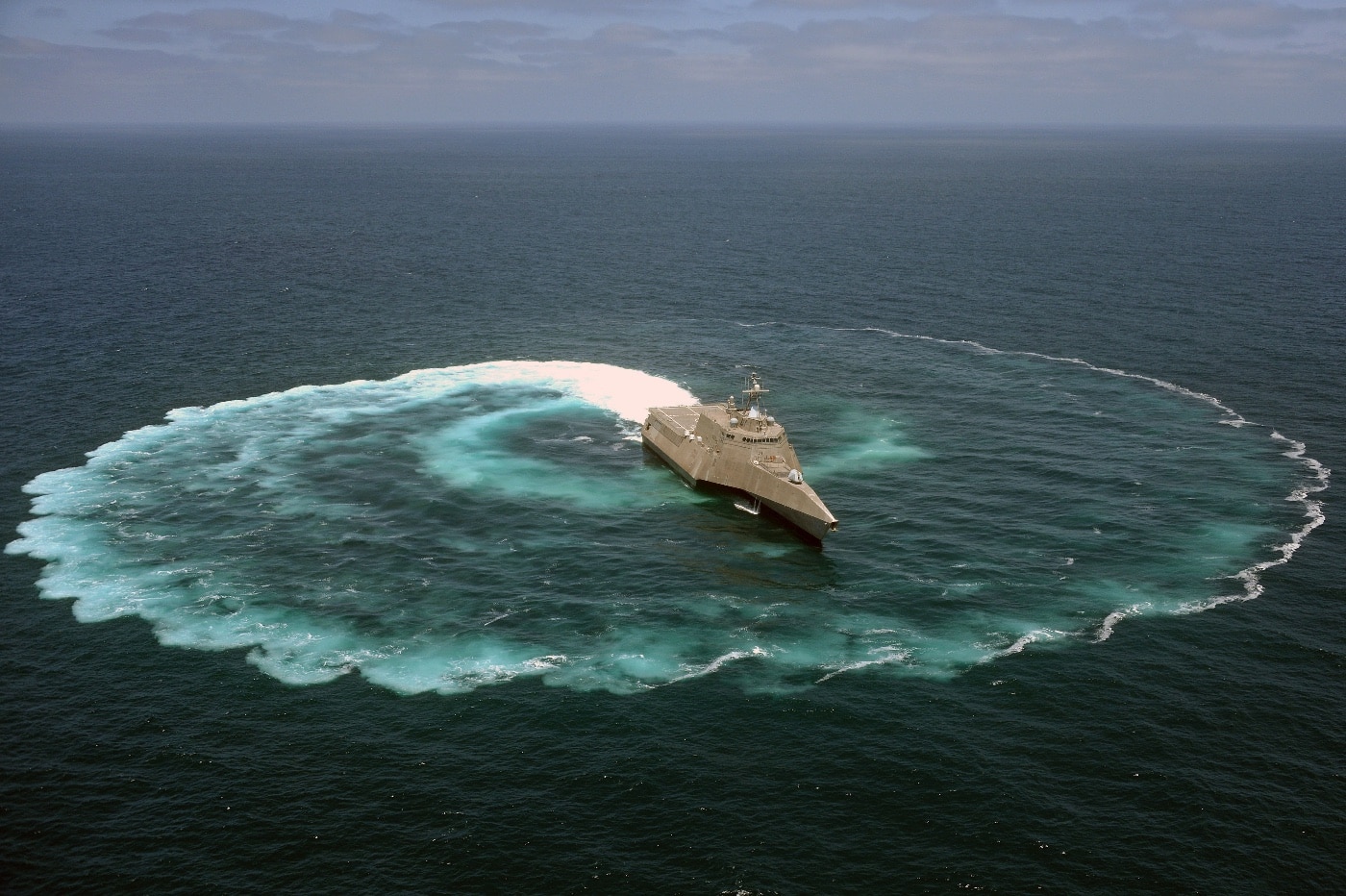
The significance of the MCM module can’t be overstated.
It essentially provided a purpose for the U.S. Navy’s Independence-class littoral combat ships (LCS) after the service struggled for years to figure out what exactly to do with what otherwise has been seen as a huge hole in the water in which taxpayers have seen their money thrown.
That’s not just hyperbole, at least not entirely.
The U.S. Navy has two classes of the LCS — and each has performed badly, with some breaking down while at sea. The issues were so bad that some sailors have taken to suggesting they should be known as “Little Crappy Ships.”
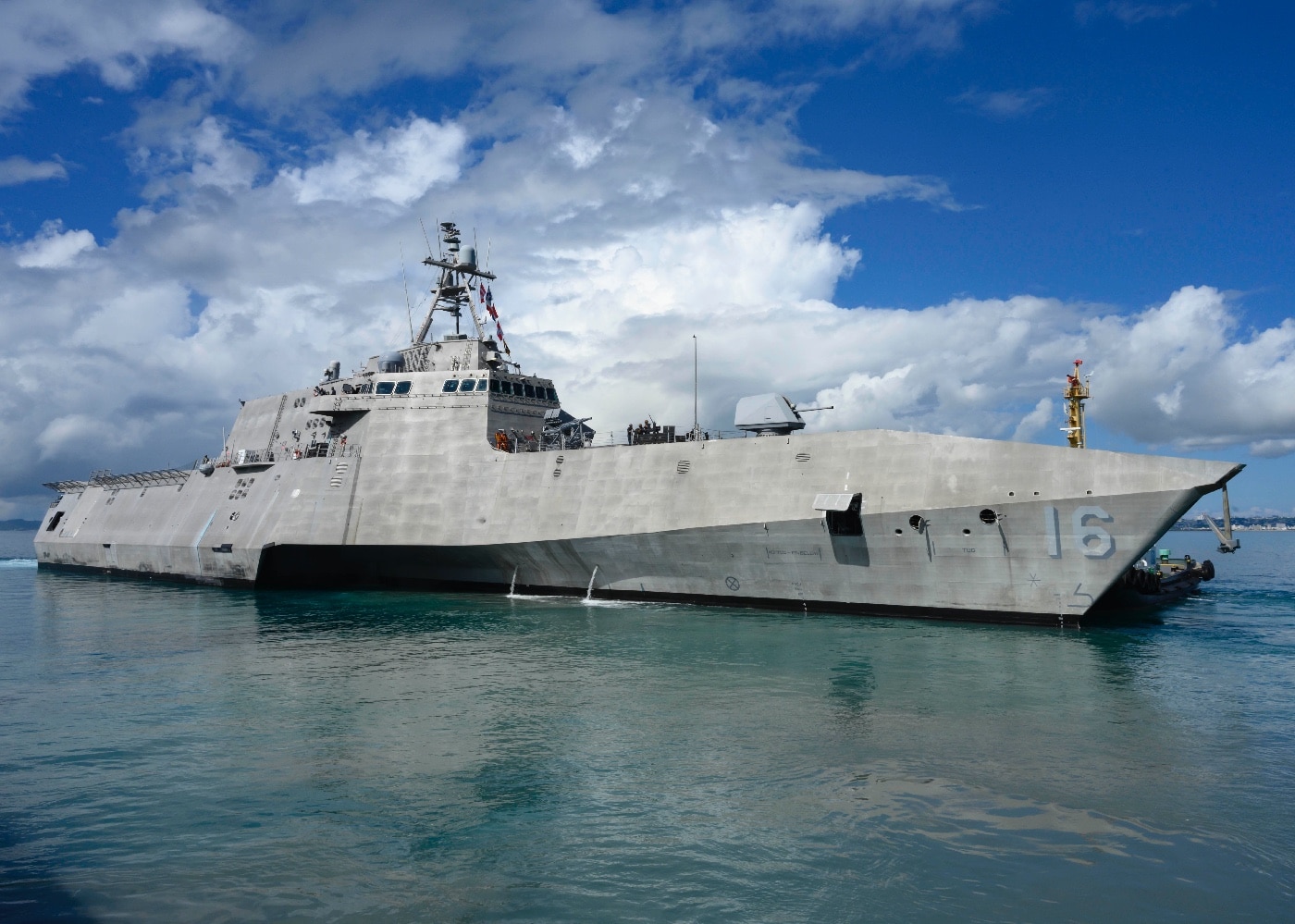
Even worse, the warships have been shown to be ill-suited to the needs of the U.S. Navy in the post-Global War on Terror (GWoT) era. So ill-suited for combat against a near-peer adversary were the LCS, the U.S. Navy hasn’t even deployed the vessels to the Red Sea — the very type of waters they were designed to operate in.
Origins of the LCS — And Its Problems
It needs to be stated that the LCS program has faced troubled waters throughout its entire existence, and much of it goes back to when the program was devised. Unlike the United States Navy’s aircraft carriers, destroyers or cruisers that have been the core of the service for a century or longer, the LCS was only conceived after the September 11, 2001, terrorist attacks on New York City’s World Trade Center and the Pentagon outside of Washington, D.C.
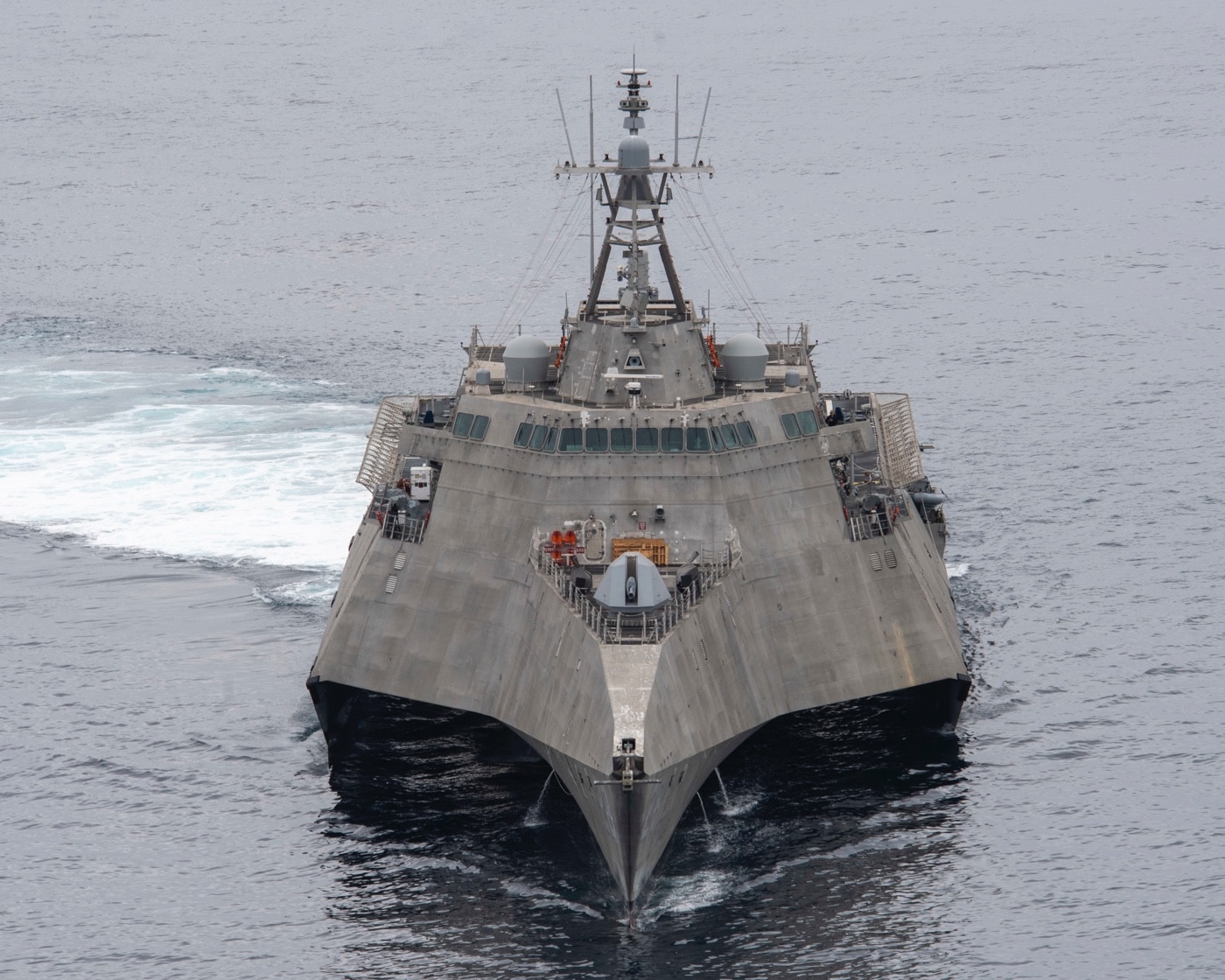
The idea was that the U.S. Navy would need small warships suited to the GWoT, where adversaries were unlikely to have powerful warships or capable aircraft.
Instead, the U.S. Navy sought to develop smaller vessels that could combat missile-firing boats and even small submarines. The idea was that the stealthy surface combatants could defeat anti-access and area-denial (A2/AD) threats in littoral (near-shore) waters. In theory, and likely on paper especially, the vessels were designed to incorporate a variety of modules that would ensure adaptability to the mission.
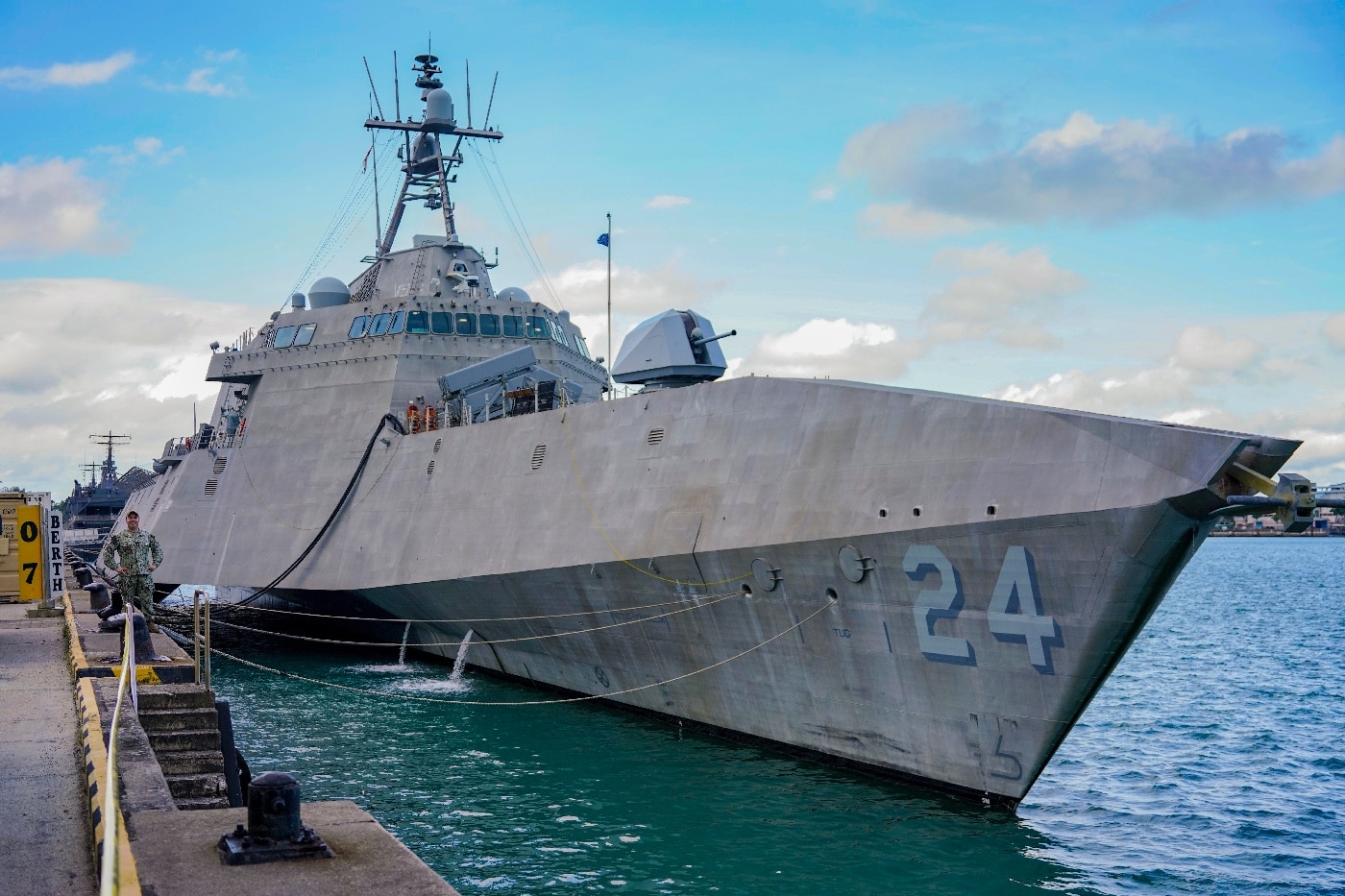
Smaller than the Oliver Hazard Perry-class frigates, the LCS was meant to combine speed and flexibility. The U.S. Navy even adopted two unique variants. The Austal USA-designed and built Independence-class, a 421-foot-long all-aluminum vessel that featured a trimaran stabilized mono-hull. It was meant to allow for flight operations from its helicopters in sea state five (rough) conditions. The other was the Lockheed Martin-designed (and built by its Marinette Marine division) Freedom-class variant, which was slightly shorter, with a 387-foot-long steel semi-planing monohull.
While meant to operate where larger warships could not, the vessels began to enter service in 2008 — by which time the geopolitical situation was already beginning to change.
Lack of Support from Washington D.C.
In addition to the aforementioned problems, lawmakers on Capitol Hill were being a bit “bipolar” on the program. On the one hand, Congress cut the funding for the mission modules as it was becoming clear the warships wouldn’t be deployed to the Middle East, which left the U.S. Navy with small and fast ships that lacked the weapons needed to accomplish most of its missions, while at the same time forcing the service to keep accepting the warships. (More on that in a minute.)
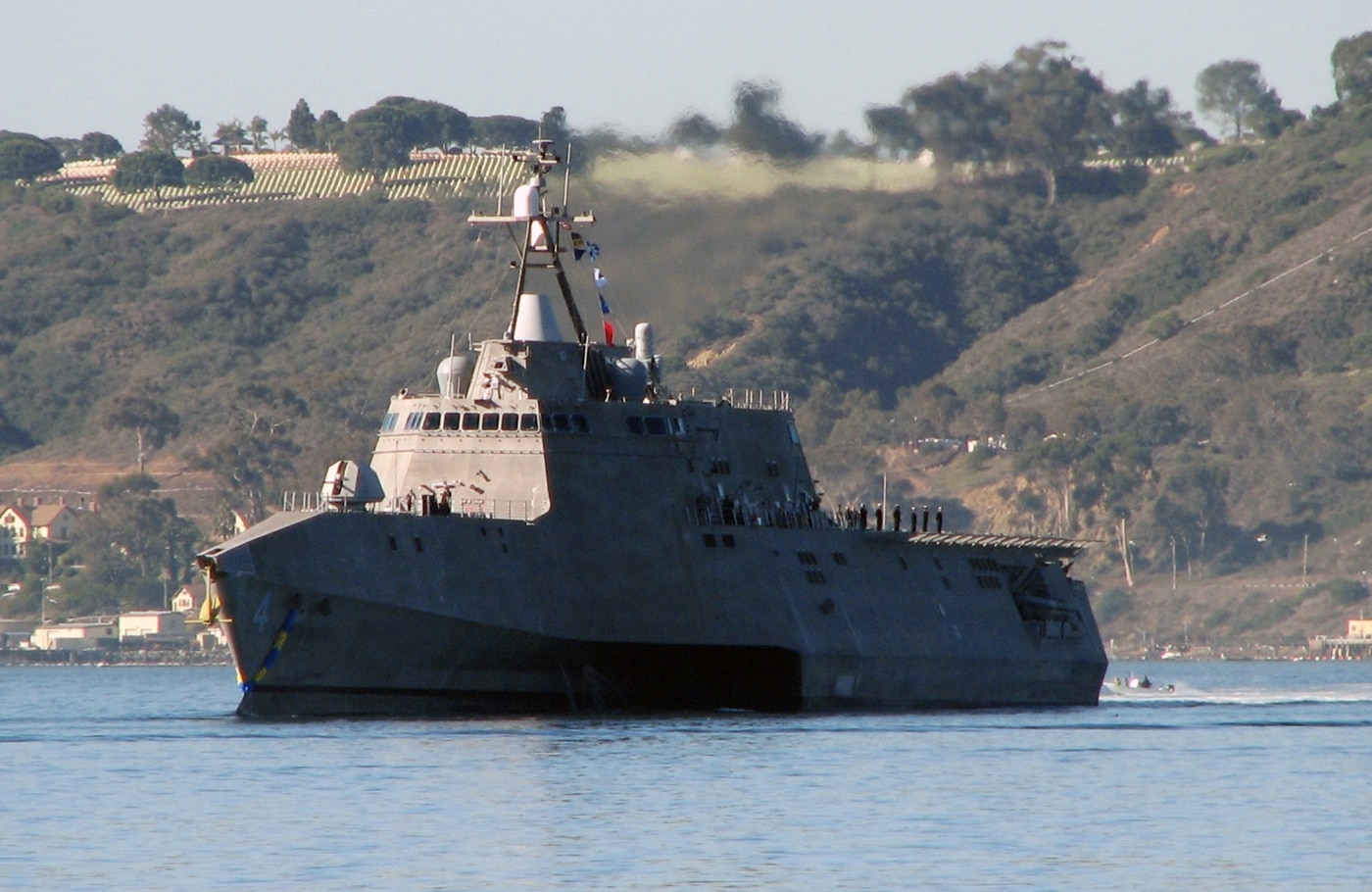
As the U.S. Navy pivoted back to great power competition and is refocused on combating a “near-peer” adversary, it would seem the LCS could find a place in the South China Sea — where there are numerous atolls, small islands and potential navigation hazards to larger warships. Yet, naval experts have argued that the vessels aren’t ideally suited to crossing the Pacific without major support, and can’t operate independently in a major conflict.
Thus, instead of being a force multiplier, the littoral combat ship would be an anchor slowing down larger and more capable vessels.
Perhaps had that been the core problem, it could have been resolved with those mission modules.
Yet, the LCS vessels were also prone to repeated breakdowns due to a class-wide transmission issue with the Freedom-class variants that literally left them all but dead in the water. Even worse, the class was hit with cracks in the hull that were found to grow if the ships exceeded 15 knots.
Those facts likely explain why the U.S. Navy has not moved forward with the MCM on the Freedom class and instead focused on finding a role for the Independence class.
Retired Before Their Time
Even as the U.S. Navy may have some level of confidence in the Independence class, it has begun to retire the oldest warships from both of the sub-classes. In 2021, the United States Navy decommissioned the USS Freedom (LCS-1) and the USS Independence (LCS-2) with little fanfare. Both vessels left the fleet after just 11 years in service, far shorter than their expected 25-year lifespan.
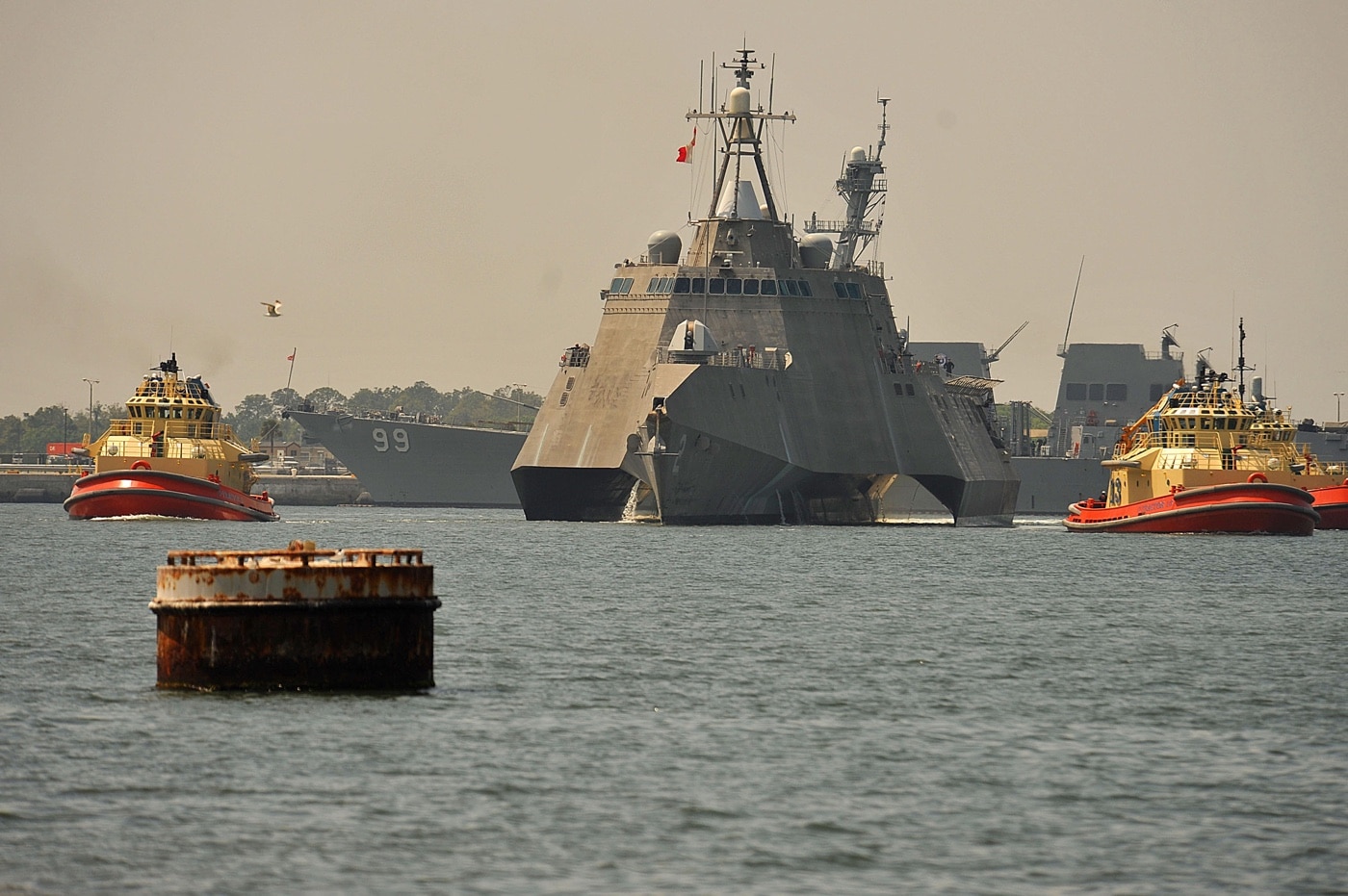
As of August 2024, five LCS had been decommissioned, while the United States Navy has considered offering some of the warships to allies and partners in the Middle East and South America via the Pentagon’s foreign military sales. Foreign nations have seen a role as coastal protection craft — and in fairness, the LCS has been used with some success in drug interdiction missions, but that was only after finding a problem for the solution.
Meanwhile, the Navy would likely try to retire even more of them, but lawmakers have scuttled any of those plans. The passage of the U.S. National Defense Authorization Act (NDAA) 2024 prevented the U.S. Navy from reducing in size, which meant the service was forced to keep warships that were simply costing money to operate.
But that isn’t even the worst of it.
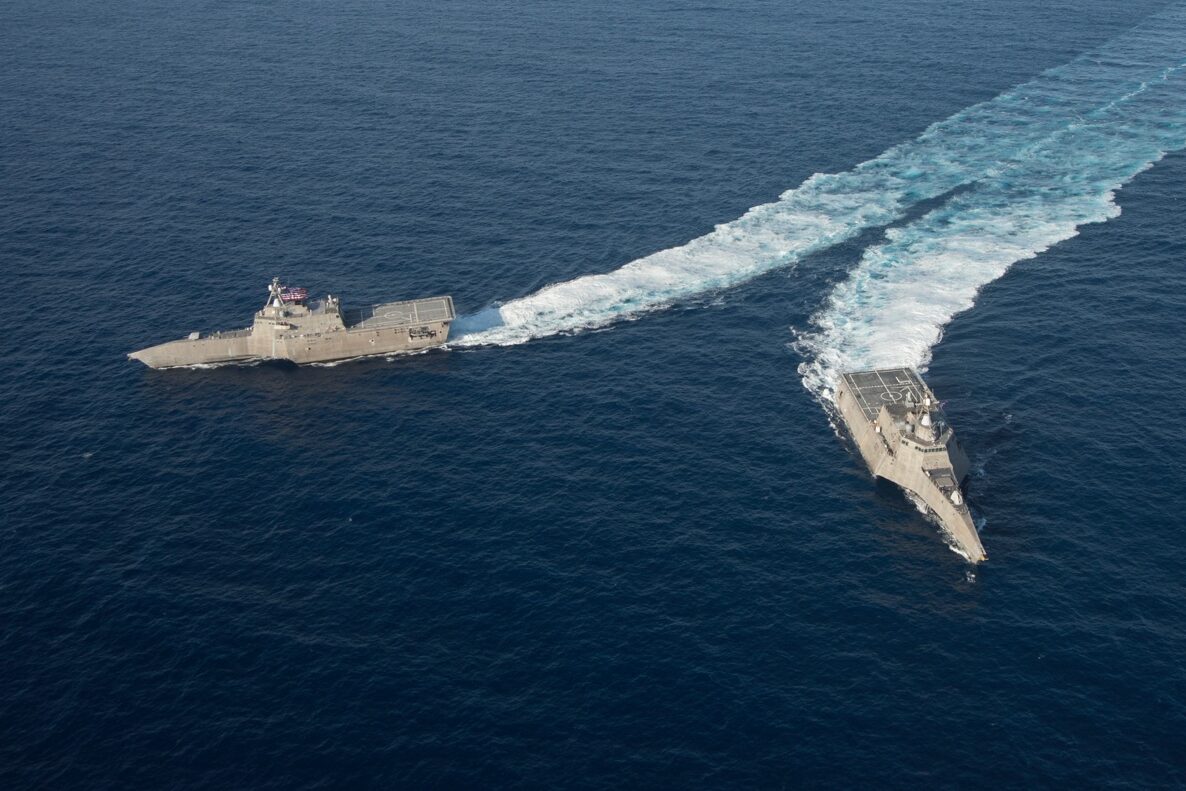
The Pentagon has awarded contracts in excess of $100 million to sustain the fleet, while the U.S. Navy has yet to accept the final two LCSs — one of each variant. In other words, even as the oldest LCS vessels were being retired due to problems, the Navy was on the hook for additional vessels.
The sea service has looked to provide “offensive capability” for the remaining LCS in the form of the Mk 70 Payload Delivery System (PDS). However, instead of being a true mission module, this is a 40-foot-long container that holds four strike-length Mk 41 vertical launching system cells (VLSC). Each is capable of supporting SM-6 and Tomahawk cruise missiles, which could be employed to strike land and maritime targets up to nearly 1,000 miles away. The U.S. Army has deployed a ground-based variant known as the Typhon since 2023.
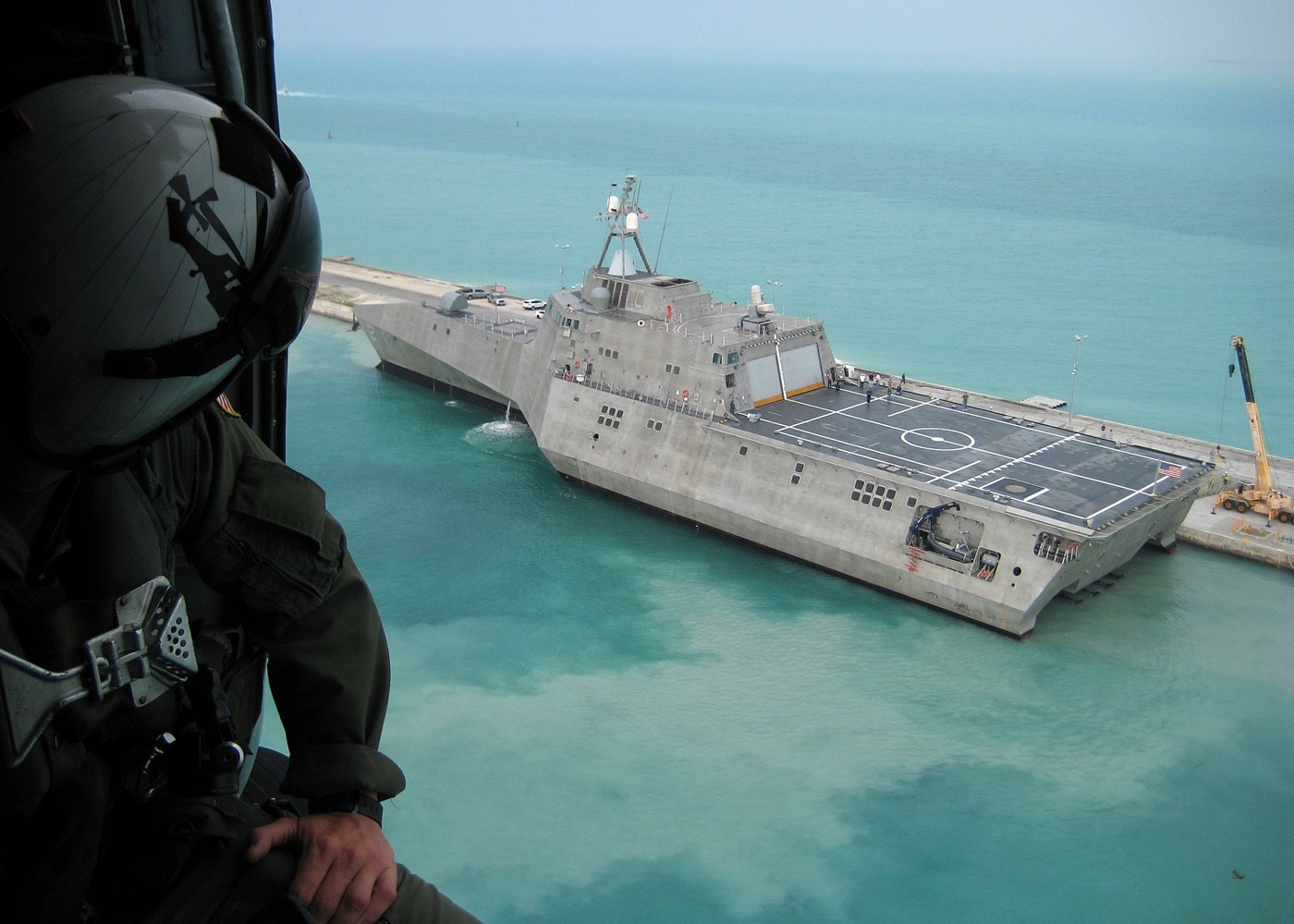
Former Secretary of the Navy Carlos Del Toro suggested the Mk 70 PDS could be deployed on both the Freedom-class and Independence-class LCS vessels. Yet, it has been noted that the system would require the containers be placed on the helicopter landing pad, thus impacting helicopter operations.
21st Century Minesweepers
Even as the Mk 70 PDS seems like an odd solution to fixing the woes of the LCS, the Independence-class variants may still find a niche — essentially replacing the service’s 14 Avenger-class mine countermeasure ships (MCS), which were developed as mine hunter-killers capable of seeking, classifying and then destroying both moored and bottom mines. Each of those vessels is equipped with sonar and video systems, cable cutters, and a mine-detonating device.
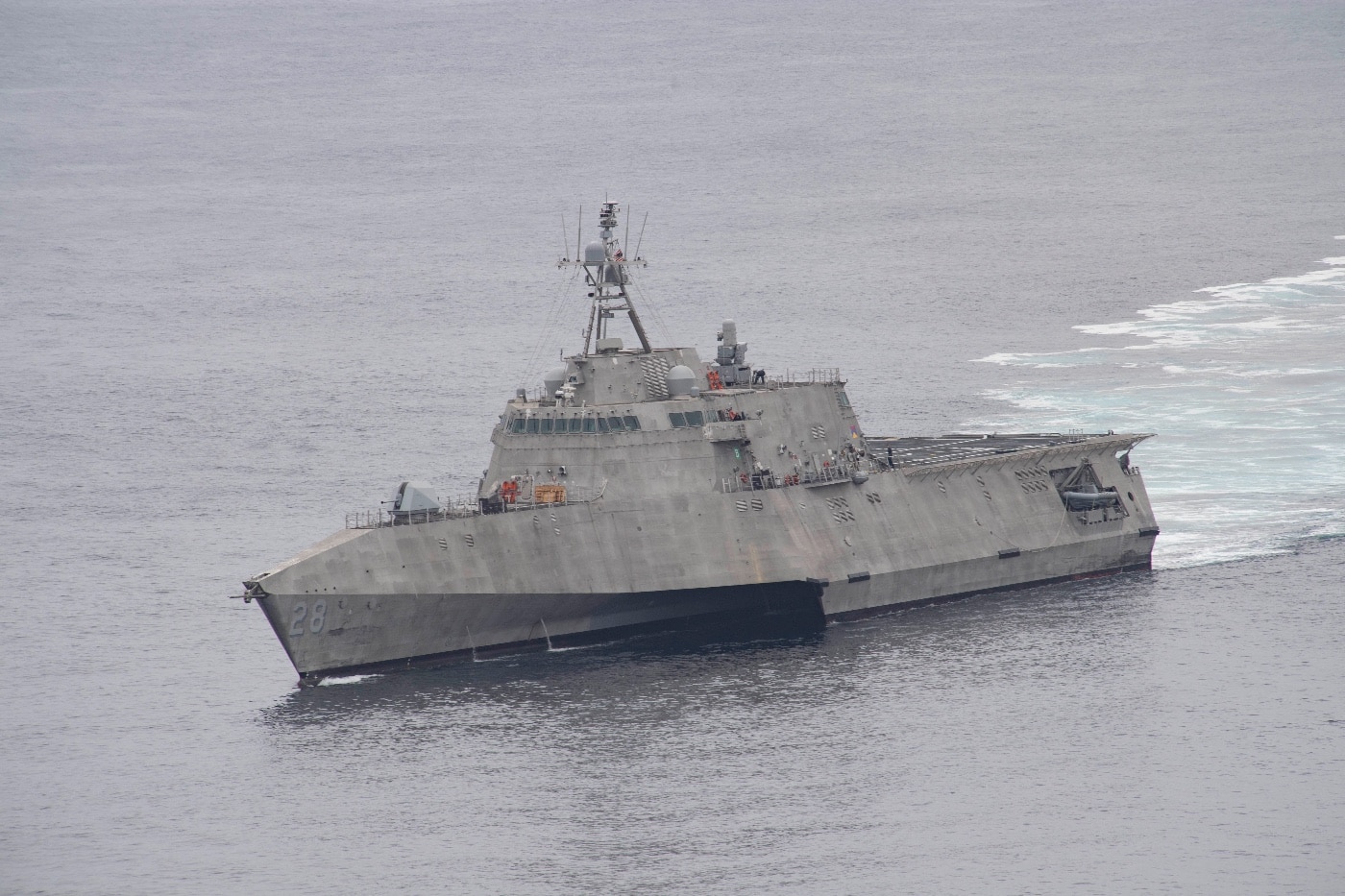
It allows the mines to be collected and even detonated remotely.
In addition, the Avenger class can conduct conventional mine-sweeping measures. A total of 15 of the Independence-class ships will take over that role as the vessels are equipped with the MCM modules.
“The LCS Mission Modules program delivers to the fleet a modernized and integrated MCM mission package that removes sailors from the minefield and allows for the future retirement of legacy MCM ships,” explained Capt. Matthew Lehmann, program manager of the LCS Mission Modules program office, last year after USS Canberra received the module.
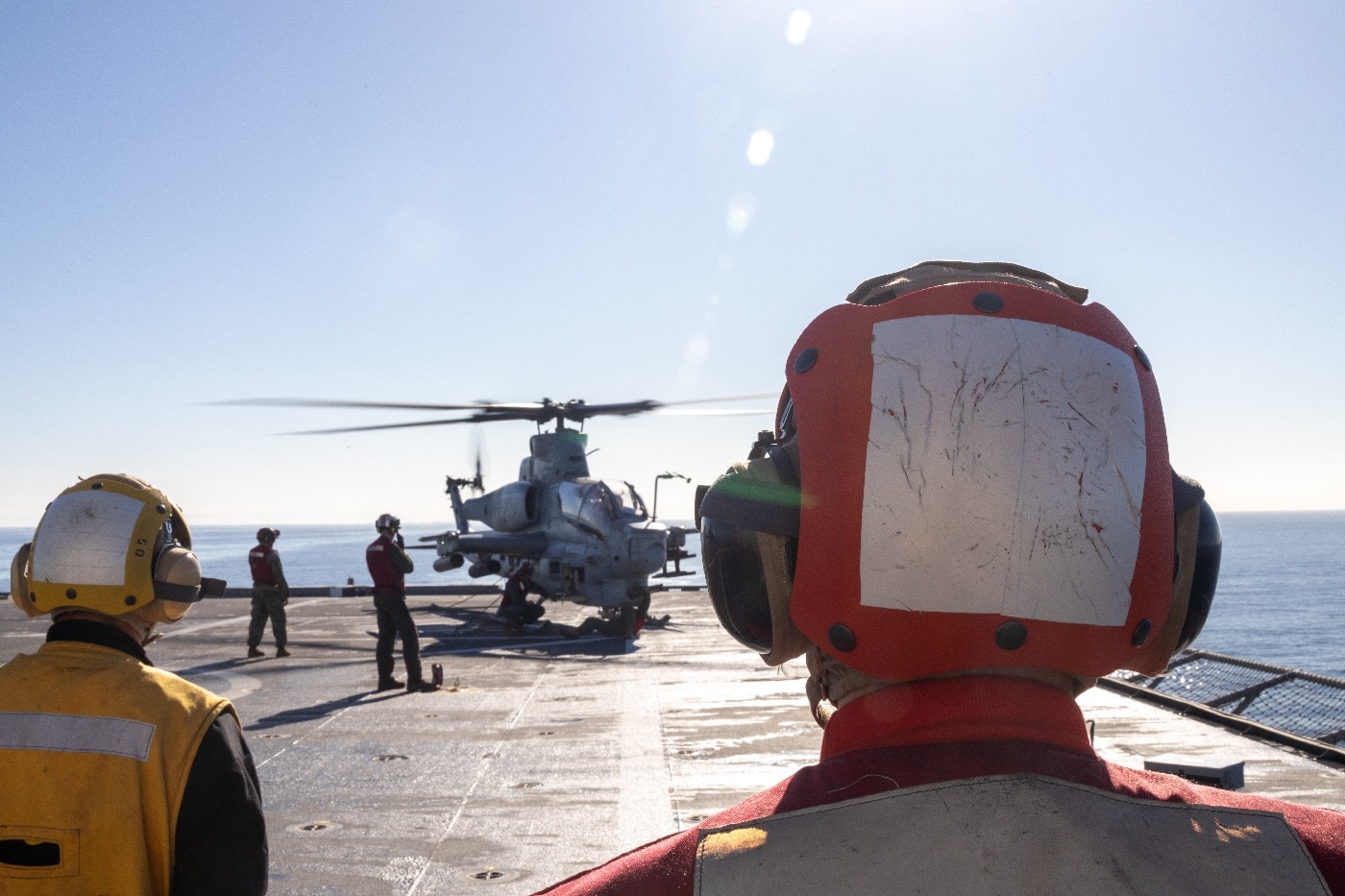
The module consists of a suite of unmanned maritime systems and sensors, and it can replicate much of what the specially designed Avenger class can do. According to the United States Navy, the first LCS vessels equipped with the MCM mission module could be deployed to the Middle East by the end of 2025 or early 2026.
If the deployments prove successful, the U.S. Navy would then divest its legacy Avenger-class ships in favor of the Independence class.
However, this is still from an ideal solution. As noted, the LCS was designed to be a modular warship that could carry out a variety of missions, although mine sweeping wasn’t meant to be its primary role.
As Naval News reported in January, “The components of the LCS MCM mission module were not originally designed to be loaded into the 30,000 square feet of mission bay space and shortcomings have been encountered in balancing the space between 11-meter CUSVs, four or five 12-foot CONEX boxes, a lift system for the CUSVs, and an independent berthing box for the operators of the MCM suite.”
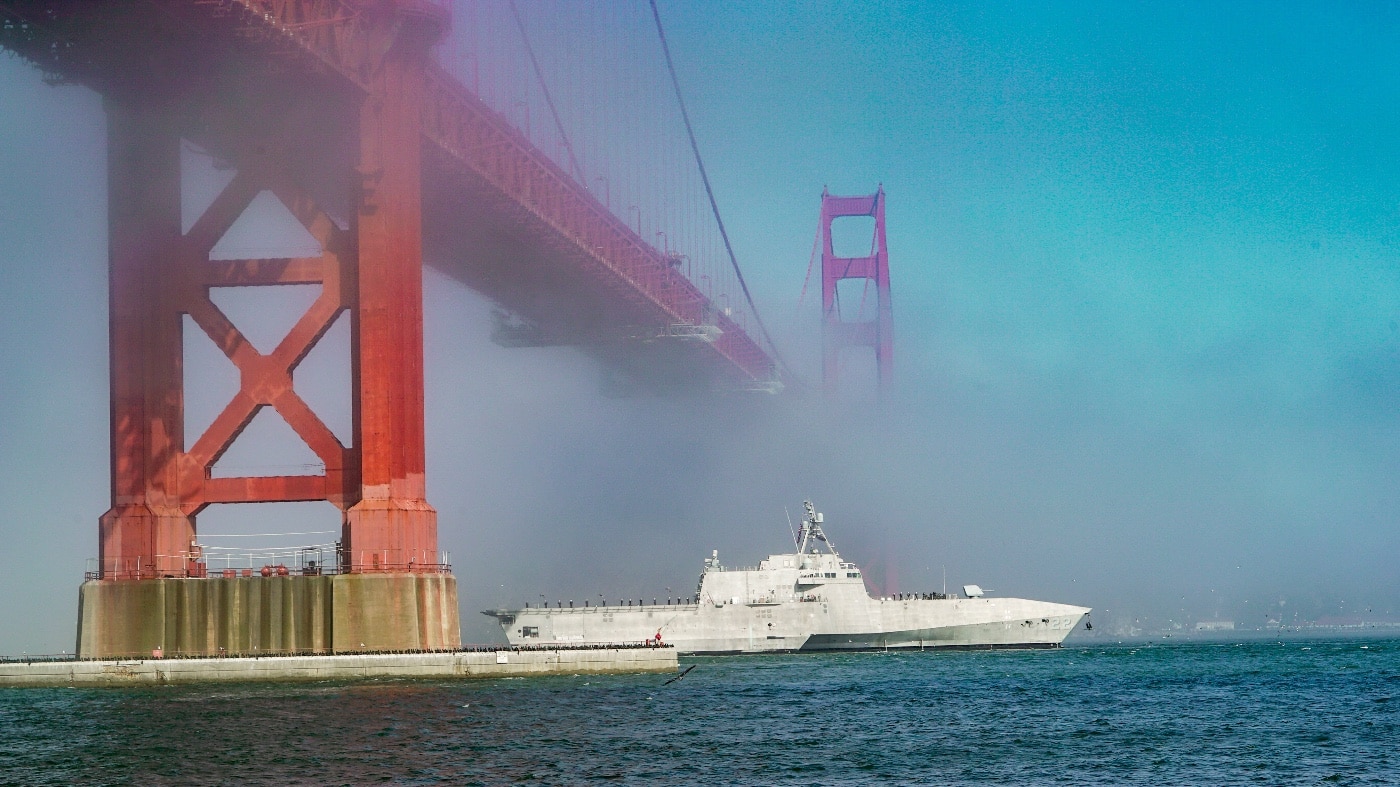
The LCS continues to be a square peg that the U.S. Navy is trying to put into a round hole and with limited success at best. While the BAE Systems Mark 110 57mm main gun and 11-cell Raytheon SeaRAM launcher will provide the Independence-class LCS greater defense from air, surface and even land threats than the Avenger class has, it has yet to prove it is actually suited to the minesweeping role.
Editor’s Note: Please be sure to check out The Armory Life Forum, where you can comment about our daily articles, as well as just talk guns and gear. Click the “Go To Forum Thread” link below to jump in!
Join the Discussion
Read the full article here







